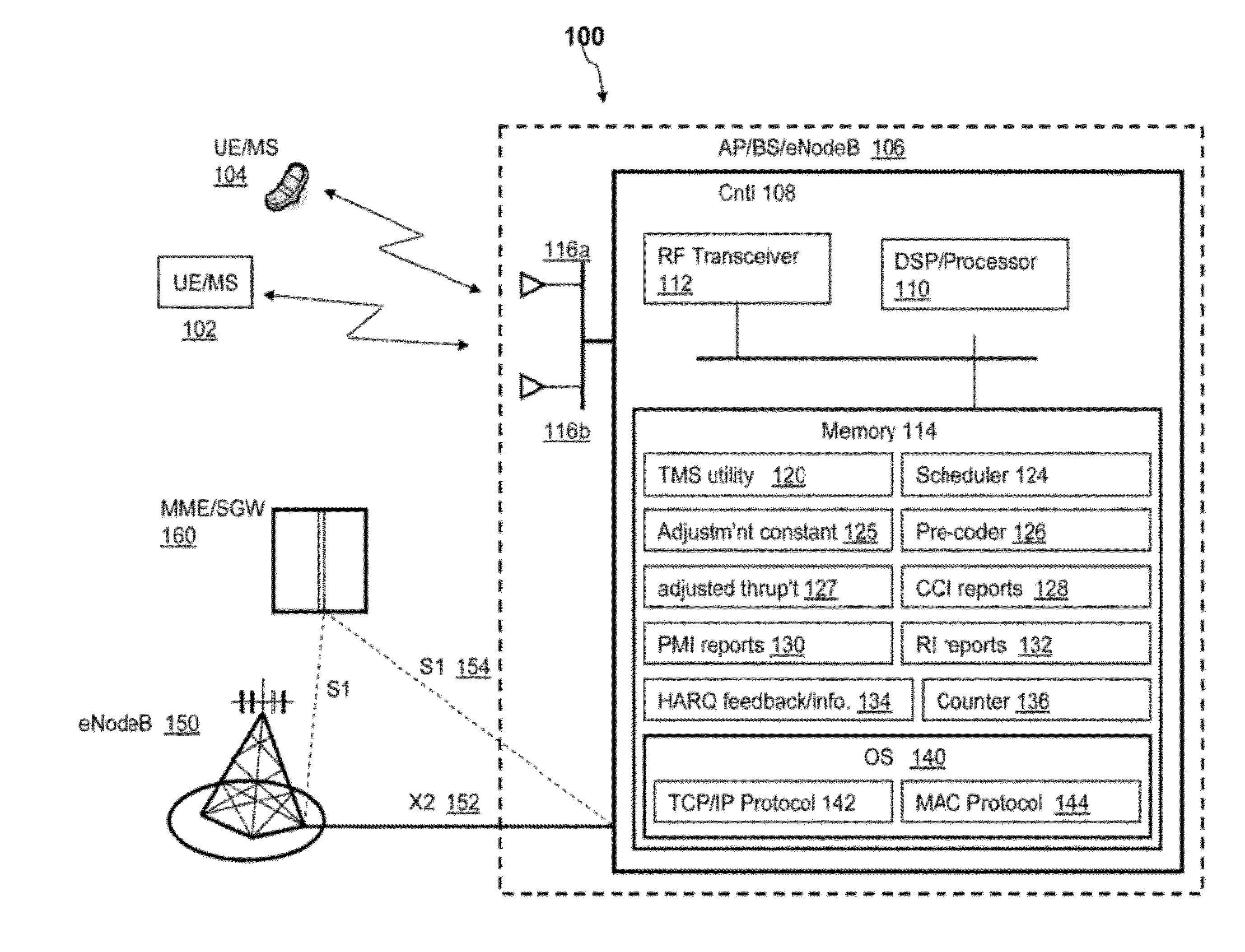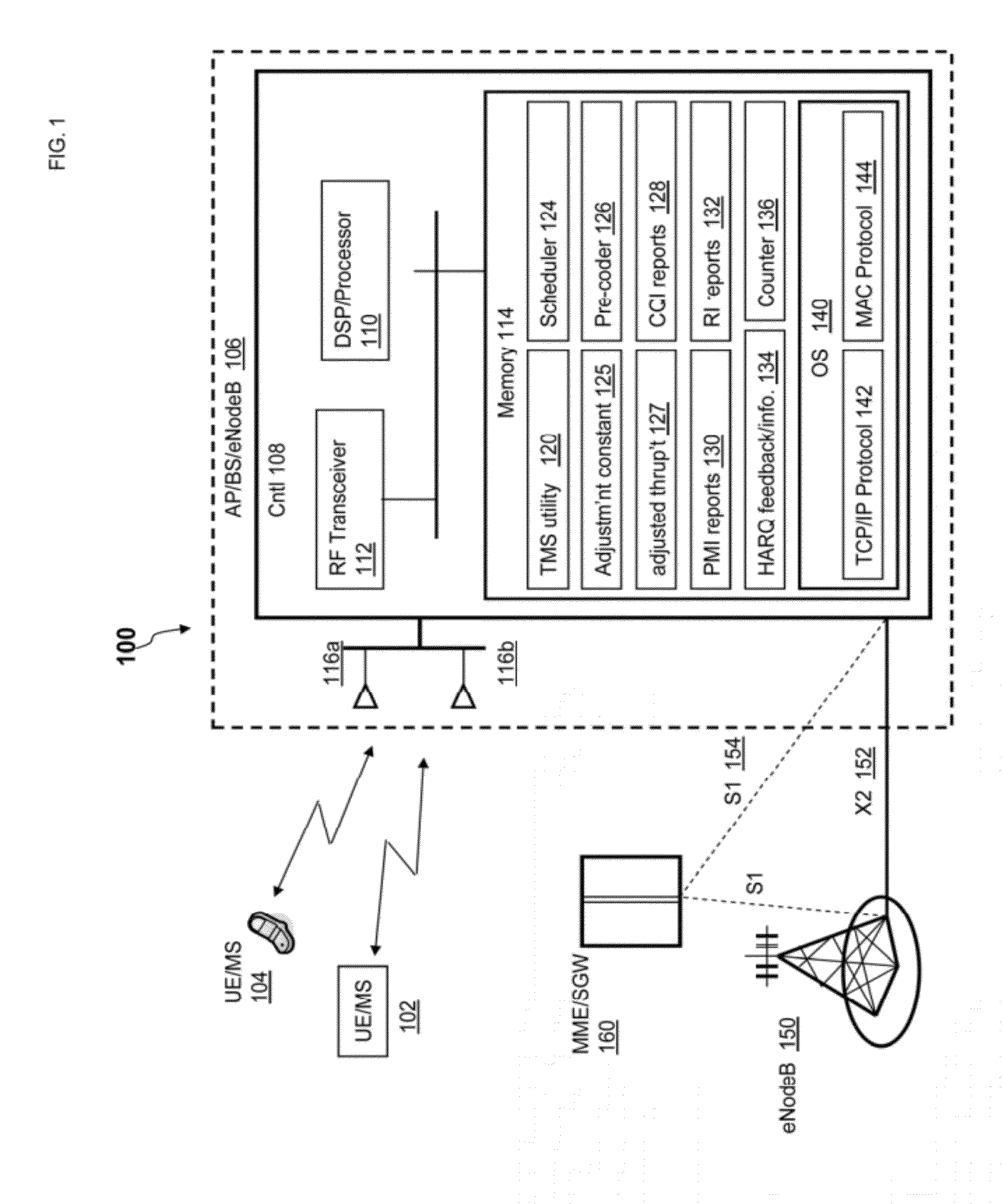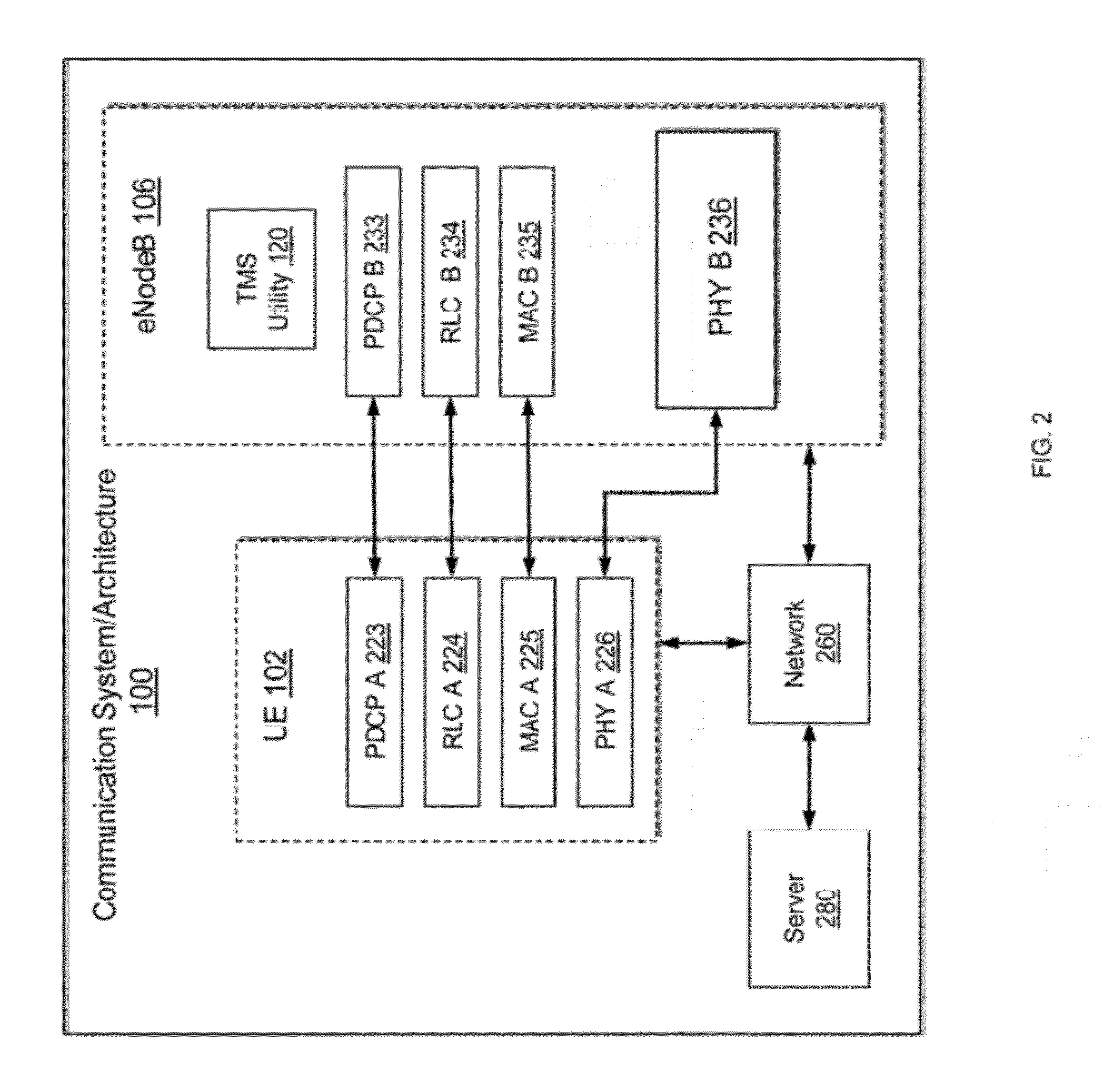Downlink pdsch transmission mode selection and switching algorithm for LTE
a transmission mode and switching algorithm technology, applied in the field of wireless communication systems, can solve problems such as significant computational and logical complexity, inability to work, and mobile device based solutions
- Summary
- Abstract
- Description
- Claims
- Application Information
AI Technical Summary
Benefits of technology
Problems solved by technology
Method used
Image
Examples
Embodiment Construction
[0013]The illustrative embodiments provide a method, system, and base station for deterministically selecting a downlink transmission mode in a Long Term Evolution (LTE) configured wireless communication system. The Transmission Mode Selection (TMS) utility receives from a wireless device a request for downlink physical shared channel (PDSCH) service using a particular transmission mode and specific rank. The TMS utility determines an estimate of the throughput corresponding to the request. In addition, the TMS utility obtains estimates of Hybrid Automatic Repeat Request (HARQ) error adjusted throughput corresponding to other distinct pairings of transmission mode and rank to compare with the throughput estimate corresponding to the request. The TMS utility utilizes device feedback information and HARQ error information that are already existing / available in order to determine the best transmission mode and rank pair, according to the best Error-Adjusted-Throughput.
[0014]In the foll...
PUM
 Login to View More
Login to View More Abstract
Description
Claims
Application Information
 Login to View More
Login to View More - R&D
- Intellectual Property
- Life Sciences
- Materials
- Tech Scout
- Unparalleled Data Quality
- Higher Quality Content
- 60% Fewer Hallucinations
Browse by: Latest US Patents, China's latest patents, Technical Efficacy Thesaurus, Application Domain, Technology Topic, Popular Technical Reports.
© 2025 PatSnap. All rights reserved.Legal|Privacy policy|Modern Slavery Act Transparency Statement|Sitemap|About US| Contact US: help@patsnap.com



